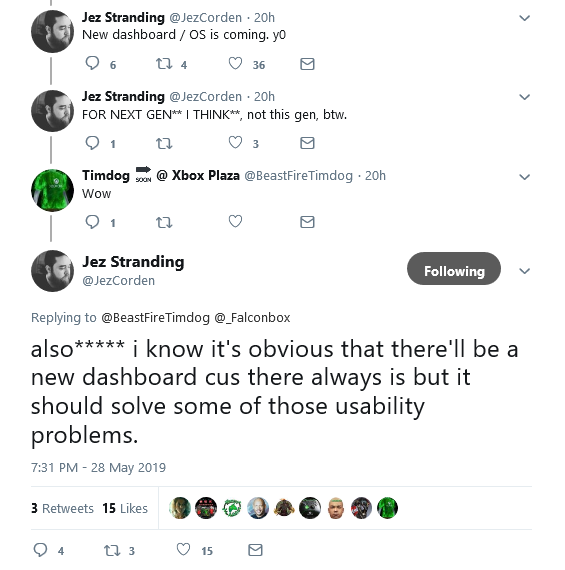There was a jeuxvideo leak picked up from reddit (posted c. Jan 15 2019, reported 28 Jan 2019)
Vous le savez, les consoles de jeux sont au coeur d'un cycle de vie qui se renouvelle environ tous les 6 ou 7 ans. Ainsi, hormis Nintendo qui nage à contre-courant avec sa Nintendo Switch lancée en 2016, Microsoft et Sony devraient vraisemblablement lancer leurs nouveaux poulains aux alentours...

www.jeuxvideo.com
- $249 Lockhart- 8-core CPU, a 4TF GPU, 12GB of RAM, 1TB SSD and DirectX Ray Tracing support.
- $499 Anaconda.. same plus stronger 12TF GPU and 16GB of RAM
 SonGoku
- can this go in the first post list ?
SonGoku
- can this go in the first post list ? Thanks done
A quick summary (website in french) :
Two consoles, both launch holiday 2020.
Lockhart (streaming)
- $ 249
- CPU : Zen2 (custom) 8 cores/16 threads
- GPU : Navi (custom) 4+ TF
- Memory : 12GB GDDR6
- "hard Drive" : 1TB NVMe SSD @ 1+GB/s
- DirectX Raytracing + MS AI
Anaconda
- $ 499
- CPU : Zen2 (custom) 8 cores/16 threads
- GPU : Navi (custom) 12+ TF
- Memory : 16GB GDDR6
- "hard Drive" : 1TB NVMe SSD @ 1+GB/s
- DirectX Raytracing + MS AI
The also claimed to known PS5 specs (!) :
- $399
- CPU : Zen2 (custom) 8 cores/16 threads
- GPU : Navi (custom) 8+ TF
- Memory : 12GB GDDR6
- "hard Drive" : 1TB SSD
- Delayed from holiday 2019 to early 2020 or later
Originally posted by u/NovaMonbasa (deleted account) on reddit (
imgur screencaps) .. they also claimed Asobo, IO interactive, Platinum Games, Turtle Rock, Bluepoint, Relic, and The Farm 51 (and others) in talks about acquisitions
Xbox launch games :
- Halo Infinite (crossgen)
- Forza Motorsport (crossgen)
- Age of Empires 4 (crossgen)
- Perfect Dark
- Killer Instinct 2
- Bleeding Edge (crossgen)






